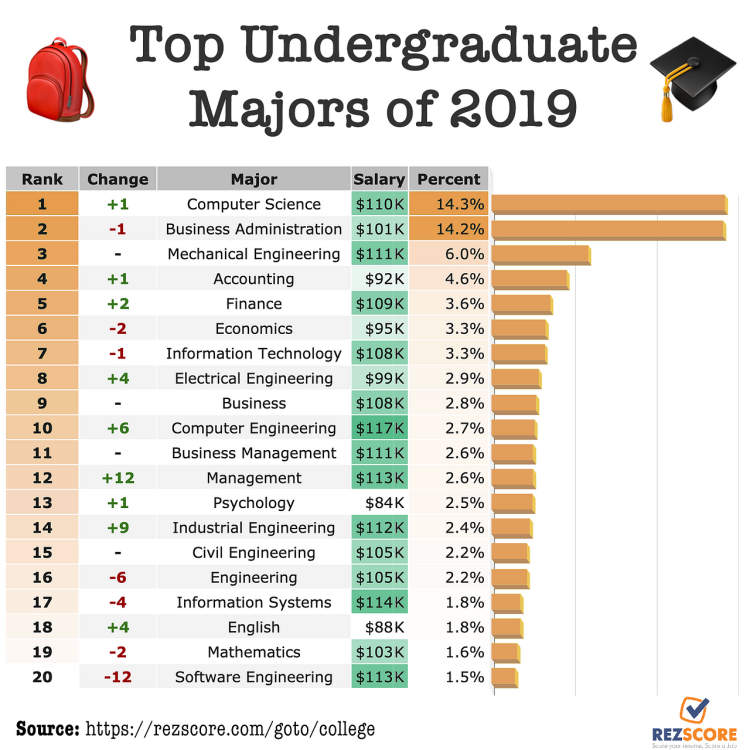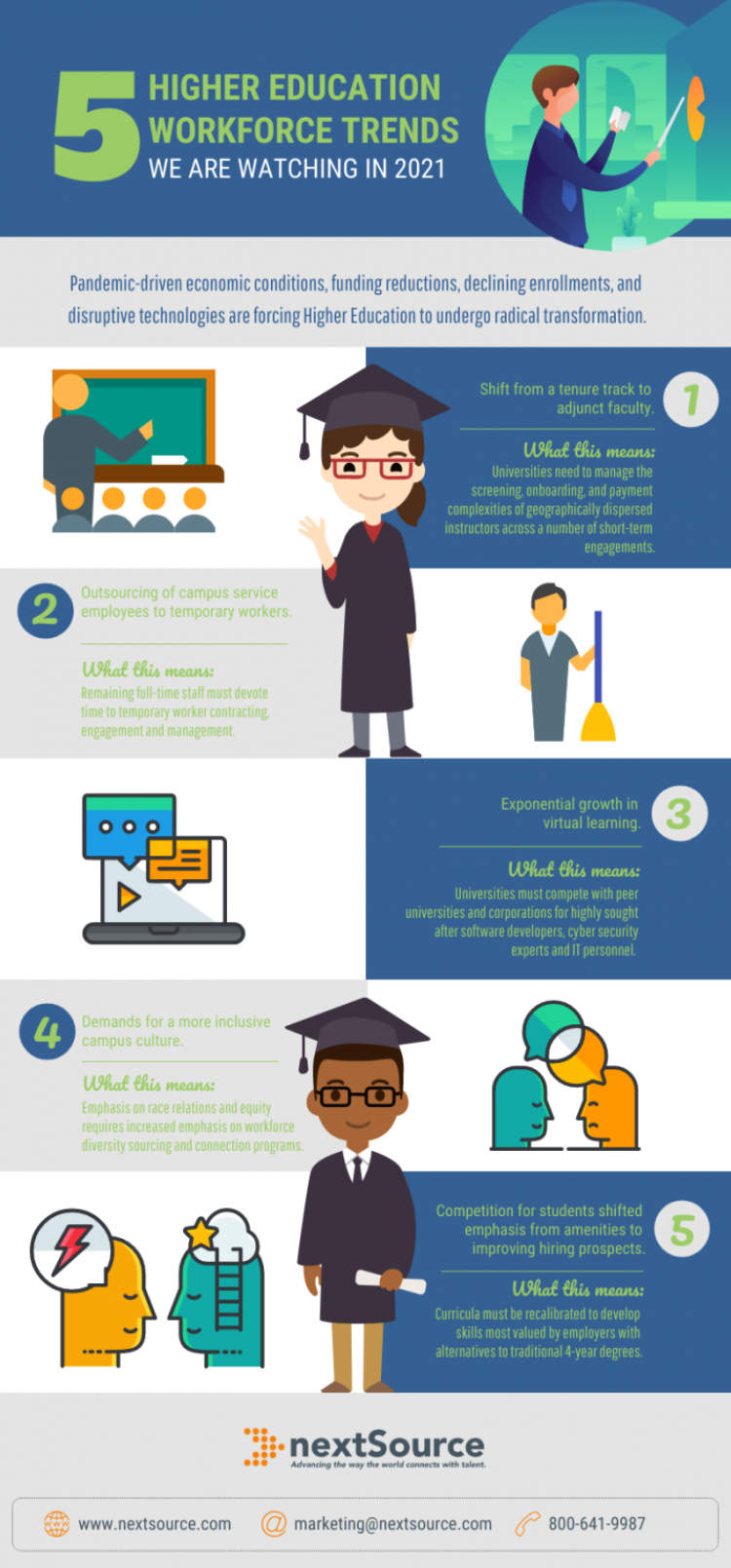US higher education trends have become much more complex as the scope of study, cost of tuition and method of delivery continues to evolve. Despite these changes in policies and academic methods, there are still identifiable trends among students that can help bring direction to higher education.
This article explores the varied US higher education trends within postsecondary education, ranging from the most popular areas of study to the changing cost of tuition. By understanding these major topics, students and parents can gain insights into how to best navigate their US higher education journey.
Current Trends in US Higher Education
As the US higher education sector continues to grow, its trends are also becoming increasingly more complex. In recent years, programs such as massive open online courses (MOOCs) and college ranking systems have gained ground among students, teachers, and administrators alike. This article will explore the current trends in US higher education and their implications for the future of the American educational system.
One of the most popular trends in US higher education is the emergence of MOOCs, which are digital courses available online for free or at a reduced cost. While these courses can often provide a convenient way to learn skills, their ultimate impact is unclear. Some researchers have suggested that they can contribute to rising student debt or that they can further widen the socioeconomic gap between students. However, it’s also possible that these courses could foster more affordable and accessible education for all.
Another trend is the increasing emphasis on college rankings. Many colleges compete to be classified as “top” or “elite,” and these rankings often require students to pay steep tuition. With the shift towards ranking, some critics have argued that students are increasingly subject to pressures to attend the “best” schools, regardless of their academic ability or interest. This can reduce the incentive for students to attend more affordable, lesser-known colleges.
Many colleges are also increasingly emphasizing technology in their instruction. Devices such as laptops, tablets, and smartphones can help make learning easier and more efficient for students. Yet, some critics worry that technology-heavy classrooms could lead to a decrease in critical thinking and problem-solving skills, as students could be too reliant on such tools.
Finally, the “college experience” is an increasingly common trend in US higher education. This focuses on providing amenities and activities to make college campuses more enjoyable for students. While these aspects can be beneficial for students, some have argued that they can be a distraction from academics or an additional expense for students who may have difficulty affording the additional costs.
Overall, the US higher education sector is in a continuous state of change. From MOOCs to college rankings, the current trends have potential implications for how students are taught and how colleges are evaluated in the coming years. It’s important to consider the potential effects of these shifts in order to ensure a successful future for American higher education.
Popular Majors in US Higher Education

When it comes to higher education in the United States, there are a variety of different majors and concentrations available. Popular undergraduate majors include business, psychology, engineering, communications, English, and biology. In the graduate field, popular choices include law, medicine, accounting, and education.
Popular majors in US Higher Education can be sorted into the following categories:
- Business: Business majors often take courses in marketing, finance, management, accounting, and economics. Many graduates choose to pursue a Master of Business Administration (MBA) degree.
- Psychology: Psychology majors focus on understanding human behavior through the study of cognitive, emotional, and social processes. Popular sub-fields of psychology include clinical, health, counseling, developmental, organizational, and school.
- Engineering: Engineering is the application of science and mathematics to solve technical problems. Popular engineering fields of study include computer science, mechanical engineering, electrical engineering, civil engineering, and chemical engineering.
- Communications: Communications majors focus on writing, public speaking, and media literacy. Courses of study in this field include journalism, media studies, public relations, and speech and language pathology.
- English: English degrees focus on the development of critical analysis skills and an understanding of literature. Courses of study in this field include linguistics, literature, creative writing, and rhetoric.
- Biology: Biology majors explore the structure and function of living things and the ways in which they interact. Popular courses of study in this field include cell and molecular biology, zoology, genetics, and microbiology.
- Law: Law degrees prepare students to practice in areas such as criminal justice, corporate law, and international law. Popular courses of study in this field include constitutional law, human rights, international law, and estate planning.
- Medicine: Medicine majors study the diagnosis, treatment, and prevention of diseases. Popular courses of study in this field include anatomy, physiology, infectious diseases, pharmacology, and pathology.
- Accounting: Accounting majors focus on the analysis and management of financial resources. Popular courses of study in this field include auditing, taxation, corporate finance, and financial reporting.
- Education: Education degrees prepare students for work in a variety of settings, including elementary and secondary schools, universities, and other educational institutions. Popular courses of study in this field include instructional design, curriculum development, and educational technology.
These are some of the most popular majors in US Higher Education. Students can further tailor their major depending on their interests and strengths, and many students choose to pursue more than one major to gain a more comprehensive understanding of their chosen field.
Future of US Higher Education
The future of higher education in the United States will bring exciting new opportunities to students. As technology and the demands of the modern workplace evolve, colleges and universities throughout the country are taking proactive steps to ensure they remain relevant and innovative. By investing in new programs, campus infrastructure, and online resources, educational institutions are equipping students with the skills required to compete on a global stage. From data-driven education to smart learning platforms, the future of US higher education is brighter than ever before.
One of the most impactful trends in US higher education is the shift toward data-driven education. Educational institutions are increasingly leveraging big data to deliver an improved student experience. With real-time insights into student performance, administrators can tailor learning experiences to meet individual needs. By investing in predictive analytics, universities can develop more efficient and effective methods for delivering high-quality instruction.
Another major trend is the rise of the digital campus. With greater access to online resources, students can now access course materials and attend classes from anywhere. Online learning platforms are revolutionizing the way we think about educational delivery. By offering comprehensive digital learning experiences that are tailored to individual student needs, universities can equip learners with the skills and knowledge required to succeed in today’s competitive job market.
Finally, universities and colleges have turned to “smart” technology to modernize their campuses. Smart labs and dormitories have revolutionized the way students learn and live on campus. From in-room tablets to virtual and augmented reality systems, universities are providing learners with the tools they need to perform their best. This trend of “smart” technology has key implications for the future of higher education in the United States.
The future of US higher education is on the cusp of great change. With sophisticated technology and innovative delivery methods, universities throughout the country are embracing the opportunities of the 21st century. By leveraging big data, investing in the digital campus, and modernizing technology, universities are ensuring that their students are ready to compete in the global job market.
Conclusion
The United States higher education system is one of the world’s most recognized, with universities and colleges recognized internationally. US higher education trends shifting towards more accessible education, with online options, hybrid learning programs and fast-track programs, are allowing students to get degrees quickly and cost-effectively.
The great diversity of higher educational institutions around the US, from large public universities to small private colleges, provides students with many options for pursuing the degree or training that fits their professional or personal goals. With many changes on the horizon, US higher education is an ever-evolving area well worth exploring.




